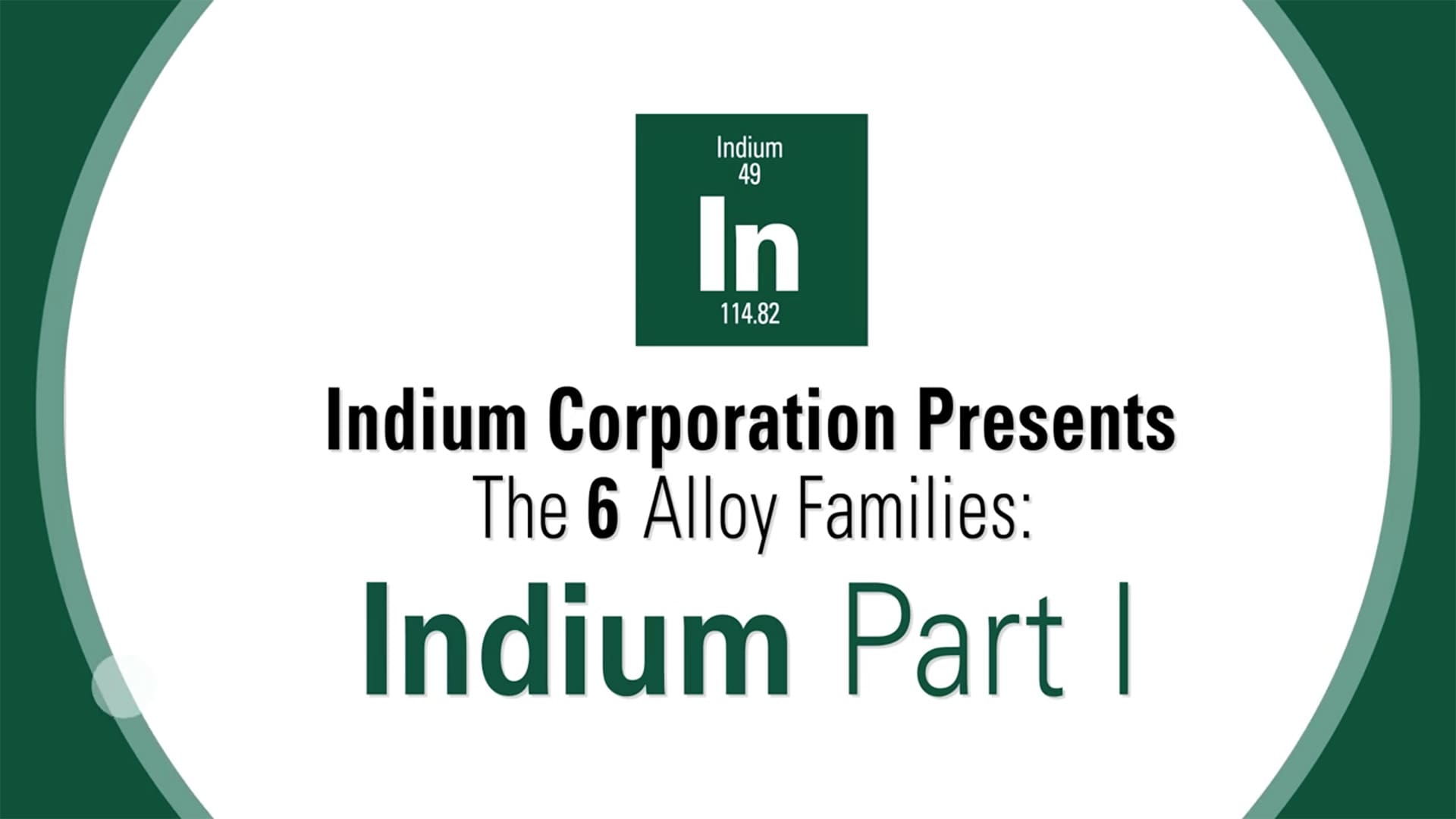Related Indium Wire Blog Articles
Indium Mailbag - Wire Options
Today’s mailbag asks: “I would like to know more about your indium wire options.” I'm glad you asked becasue we have over 60 alloys that contain indium. Indium wire comes with a wide choice of purity levels, diameters, and custom packaging options.
Read MoreIndium Recycling – End of the Year Clean-up
When you are doing your year-end clean-up, check to see if you have any indium seals or scrap pieces of indium laying around. Send us your scrap indium and we'll pay you for it or you can use it as a credit on your next purchase of indium wire or preforms.
Read MoreCreating a High Quality Indium Cryogenic Seal
Graham Wilson (Sr. Applications Engineer) and Jim Hisert talk about using indium wire or indium preforms for cryogenic seals. Find out what you need to know to make the best seal.
Read MoreIs Indium Rod Different Than Wire?
There are a few different opinions in the solder industry regarding what differentiates a rod from a wire.
Read MoreIndium Gaskets
Indium metal is soft and pliable - perfect for gasketing. Learn how people put it to work for them.
Read MoreFeatures & Benefits
As a wire, pure indium provides an excellent hermetic seal since it fills the imperfections in the mating surfaces. Pure indium also remains malleable at cryogenic temperatures so that sealing applications operating in harsh conditions are not compromised.
Contact us today to discuss your application and how our wire can work for you.
1-866-INDIUM1 (1-866-463-4861)
indiumwire@indium.com
Recycle Your Indium
For those applications (like cryogenic sealing) where indium is reclaimable from the process, our easy recycling program is just what you need.
Get credit for your material by calling:
1-866-INDIUM1 (1-866-463-4861)
or emailing us at recycle@indium.com.
Visit our Reclaim and Recycle page to learn more.
Wire Alloys
Indium-containing alloys can also be used for sealing, but are more commonly used for low temperature soldering. For example, Indalloy® 1E, which is lead-free and melts at 118°C, and can be used in unique applications like bonding to glass or ceramics.
Adding silver, tin, or other elements to indium metal changes its physical properties. In some cases, these changes allow us to produce wire with diameters as small as 0.001” (0.025mm). These additional elements also affect the melting point, hardness, and ductility of the alloy.
Some popular indium wire materials are listed below:
| Indalloy® # | Elements | Solidus Temperature | Liquidus Temperature | Comments |
|---|---|---|---|---|
| 1E | 52In/48Sn | 118°C | 118°C | Eutectic; good for low-temperature soldering and sealing |
| 1 | 50In/50Sn | 118°C | 125°C | Good for low-temperature soldering and sealing |
| 290 | 97In/3Ag | 143°C | 143°C | Eutectic |
| 2 | 80In/15Pb/5Ag | 149°C | 154°C | Good for soldering to gold |
| 4 | Pure indium | 156.7°C | 156.7°C | Bonds to ceramics, glass, and quartz; excellent for hermetic sealing |
| 204 | 70In/30Pb | 165°C | 175°C | Good for soldering to gold |
| 205 | 60In/40Pb | 173°C | 181°C | Good for soldering to gold |
| 227 | 77.2Sn/20In/2.8Ag | 175°C | 187°C | Eutectic; Pb-free |
| 7 | 50In/50Pb | 184°C | 210°C | Good for soldering to gold |
| 206 | 60Pb/40In | 197°C | 231°C | Good for soldering to gold |
| 164 | 92.5Pb/5.0In/2.5Ag | 300°C | 310°C | Good for high-temperature die-attach |
Wire Diameters
We manufacture wire containing indium and indium alloys with diameters ranging from 0.010” (0.25mm) - 0.250” (6.35mm) and up. Wire dimensions can vary based on the properties of each metal alloy, which can allow us to make some wire with diameters less than 0.010” (0.25mm).
Specifying standard tolerances can be more cost efficient, but if you need tighter tolerances, please contact us for guidance.
| Available Diameters | Standard Tolerance |
|---|---|
| 0.010” (0.25mm) - 0.060” (1.5mm) | +/-0.002” (0.05mm) |
| 0.061”(1.55mm) - 0.250” (6.35mm) | +/-0.003” (0.076mm) |
| Greater than 0.250” (6.35mm) | +/-2.5% of diameter |
Packaging and Storage
Our wire is manufactured without the use of surface coatings, and all but the largest diameter wires (rods) are packaged on spools to protect the soft material.
The shelf life of our wire is determined by the purity of indium, as well as packaging and environmental conditions.
To increase storage time and minimize surface oxidation after opening the original packaging, keep the wire tightly sealed in the original container at 55% RH or less at or below 22°C. You can also store our wire in an inert atmosphere, such as in a nitrogen dry box.










